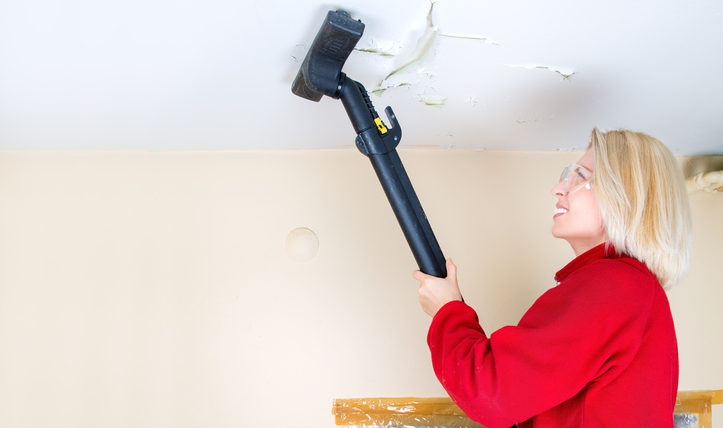Whether on your bathroom walls or under your floors, mold is never a good thing to detect. Same goes for mold on your ceiling. If you see it on the top level of your home, there’s likely a leak in your attic originating from the roof. Perhaps your roof is old and it’s more susceptible to moisture infiltration. Maybe you recently encountered storm damage, which punctured a hole and led to a leak. Whatever the case may be, ceiling mold almost always calls for roof repair by a residential roofing professional.
If you fail to act on this, the problem will only worsen with time. It’s best to catch and fix it early so you can mitigate your costs and hassle later on.
Importance of Inspection
Typically, condensation is the big culprit in terms of what’s causing mold growth in your attic, but when you start to see it on your ceilings, you may wonder how it even got there. By its very nature, water is fluid, which means it doesn’t follow one set path. The mold you’re seeing could be from moisture that originated from a leak on the other side of the roof.
This is why professional inspection is so important. Roofing technicians can detect where the leak is really coming from, and address the source. Problem is, it can be tough getting moisture out from spaces where it’s already invaded. Damp areas, common in attics and behind walls, are breeding grounds for mold. First, you’ll have to repair the leak, then you will have to tackle the mold removal.
Common Signs of Mold on Your Ceiling
Do you notice the following spots on your ceiling?
- Brown, black or yellow discoloration
- Circular patterns of mold growth
- Mold growth only in certain areas
- Mold that shows up in patches
If you said yes to any of these, you may have mold on your ceiling from a roof leak.
It’s best to get this looked at right away, as mold can result in some serious health problems and allergic reactions, particularly in children, the elderly, and immune-compromised people.
Symptoms can include:
- Dry cough
- Sore throat
- Runny or stuffed up nose
- Tightness in the chest
- Itchy, red or watery eyes
- Rash on the skin
- Dry skin
- Shortness of breath
- Sinusitis
- Wheezing
There are two kinds of exposures that can lead to mold growth on your ceiling:
- Liquid water
- Humidity
Humidity arise when warm air comes into contact with a cool ceiling. This leads to condensation and mold growth. This happens frequently in the summer.
Liquid exposure happens from direct water, stemming from plumbing failures, burst pipes, roof leaks, and more. So, in addition to roof leaks, your mold could be stemming from another source. Yet another reason to call a qualified roofing professional!
Contact Ferris Roofing
To schedule an inspection of your roof and ceiling mold, contact us at 817-440-3767.


